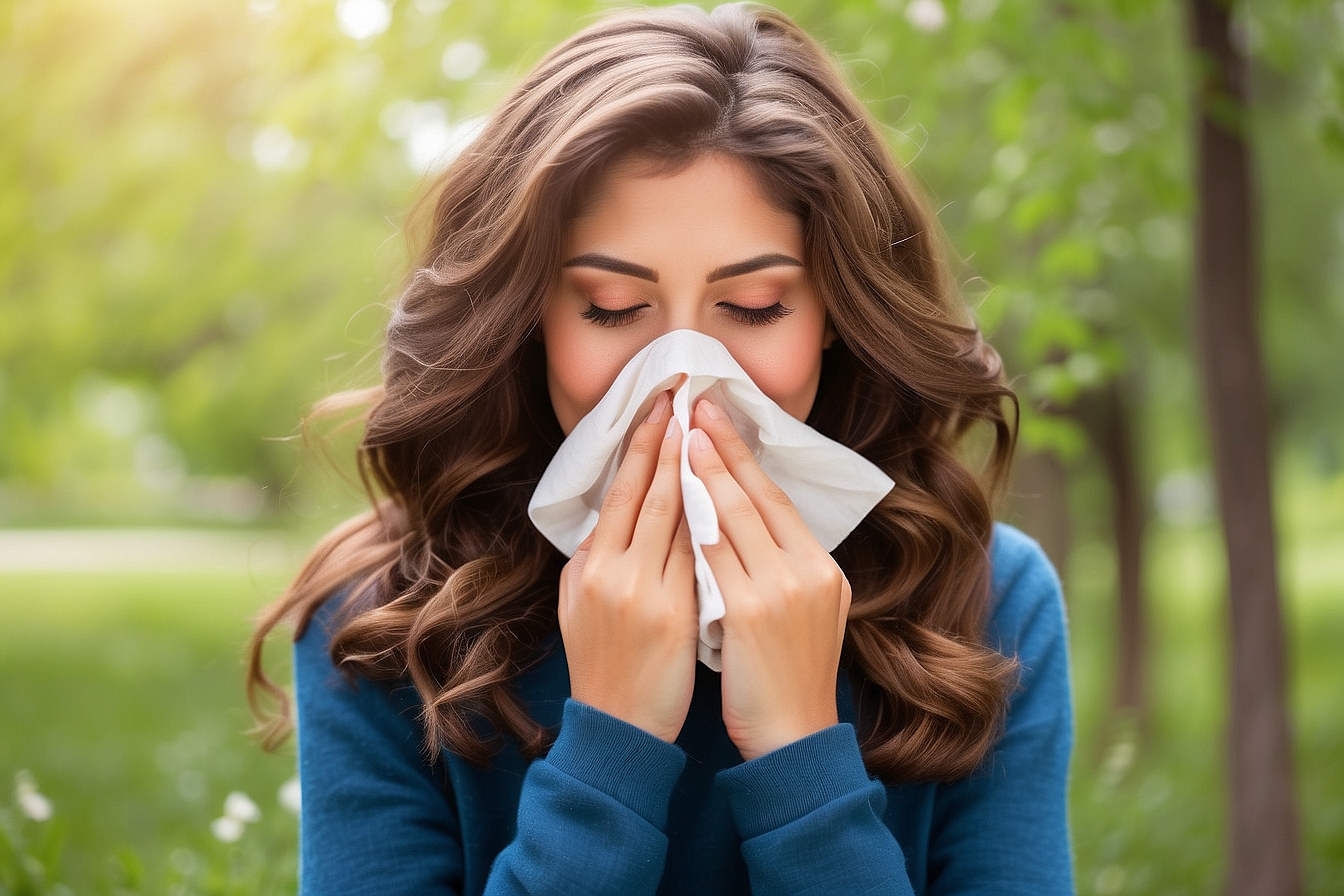Climate change isn’t merely a distant concern; it’s a pressing public health crisis at our doorstep. Many of us have experienced the disquietude as we face extreme temperatures and increasing levels of pollution in our everyday lives.
Moreover, research indicates that the escalation in global temperatures could result in an additional 250,000 deaths per year between 2030 and 2050—a startling statistic that brings the issue into stark reality.
In our latest post, we delve deep into both the overt and insidious ways such climatic upheavals can affect well-being, whilst also pondering practical measures to foster a more robust planet for ourselves and future generations.
Join us as we unwrap the potential strategies that may very well shield us from nature’s burgeoning fury.
Key Takeaways
- Climate change leads to both direct and indirect health risks, including heat-related illnesses, respiratory problems due to poor air quality, water and foodborne diseases, and the spread of vector-borne infections like malaria.
- Vulnerable populations such as the elderly, children, low-income households and those living in coastal or urban areas are disproportionately affected by climate-induced health issues.
- Extreme weather events caused by climate change can result in injuries, mental health issues and disrupt access to healthcare services. These conditions also contribute to the increase of infectious diseases.
- Air pollution worsens with climate change affecting respiratory health; changes in precipitation threaten water and food safety by increasing the risk of contamination leading to disease outbreaks.
- Urgent action is essential for mitigating public health risks from climate change with solutions focused on reducing emissions, improving infrastructure for clean water distribution and advocating for policies that support environmental justice.
The Effects of Climate Change on Human Health
Climate change has a direct impact on human health, leading to an increase in heat-related illnesses and deaths, as well as the exacerbation of respiratory conditions due to poor air quality.
Indirectly, it can also lead to food and waterborne diseases from extreme weather events and changes in vector habitats.
Direct impacts
As temperatures rise due to global warming, we’re experiencing more frequent and intense heatwaves. These are not just uncomfortable; they pose serious health threats, especially to the elderly and those with chronic health conditions.
High temperatures can lead to dehydration, heat exhaustion, and even deadly heat strokes.
Rising sea levels and extreme weather events like hurricanes and floods directly impact our well-being too. They destroy homes, disrupt lives and increase the risk of injuries. In their aftermath comes the menace of waterborne diseases as clean water becomes scarce.
We need to acknowledge these risks and work towards reducing our carbon footprint while strengthening our public health systems against these direct impacts.
Indirect impacts
Direct impacts can have immediate effects on public health, but it’s essential to recognise the indirect impacts as well. Changes in precipitation and rising sea levels due to climate change can lead to water scarcity and compromised sanitation, increasing the risk of infectious diseases.
Additionally, heatwaves and air pollution can exacerbate respiratory diseases and other health conditions, impacting vulnerable populations even more. Understanding these indirect impacts is crucial for effectively addressing the link between climate change and human health.
Moreover, changes in temperature and precipitation patterns can also influence vector-borne diseases such as malaria and dengue fever by altering the habitats of disease-carrying insects.
Vulnerable populations
As we consider the indirect impacts of climate change on human health, it’s crucial to recognise that certain populations are more vulnerable to its effects. Vulnerable communities such as the elderly, children, and low-income households often bear a disproportionate burden from extreme weather events, changes in air quality, and the spread of diseases.
These groups may lack resources for adaptation and are more likely to live in areas with poor environmental conditions. Additionally, people living in coastal regions or urban areas face increased risks due to infrastructure vulnerabilities and population density.
Environmental justice is key in addressing the impact of climate change on vulnerable populations. It’s essential to consider equity and inclusivity when developing solutions for mitigating climate-related health risks.
Specific Health Risks Arising from Climate Change
Extreme weather events such as heatwaves and storms can lead to injuries, illnesses, and mental health issues. Changes in air quality due to climate change can exacerbate respiratory diseases like asthma.
Water and food safety are also at risk from contamination due to extreme weather events and rising temperatures, leading to potential outbreaks of waterborne and foodborne illnesses.
The spread of vector-borne diseases such as malaria, dengue fever, and Lyme disease is also a concern as the climate becomes more suitable for disease-carrying insects.
Extreme weather events
Extreme weather events such as heatwaves, hurricanes, and heavy rainfall have become more frequent and intense due to climate change. These events can directly impact public health by causing injuries, displacement, and even fatalities.
Additionally, extreme weather can disrupt healthcare services and infrastructure, leading to a lack of access to medical care during emergencies. Changes in precipitation patterns also affect water quality and availability, increasing the risk of waterborne diseases such as cholera or diarrhoeal illnesses.
Human disease may spread rapidly after extreme weather events due to population displacement and damage to sanitation systems. This creates ideal conditions for the proliferation of vector-borne diseases like malaria and dengue fever.
Changes in air quality
Climate change is impacting air quality, leading to an increase in pollutants such as ground-level ozone and particulate matter. By burning fossil fuels, human activities release harmful gases like nitrogen oxides and sulphur dioxide into the atmosphere, contributing to poor air quality.
These pollutants can trigger respiratory issues such as asthma and exacerbate cardiovascular diseases, posing a significant risk to public health. As precipitation patterns shift due to climate change, it can also lead to changes in airborne allergens like pollens and moulds, further affecting individuals with allergies or respiratory conditions.
Furthermore, climate change influences the formation of smog and increases the frequency of heatwaves which can worsen air pollution levels. The combination of these factors makes it vital for us to address this issue collectively by reducing our carbon footprint and promoting sustainable energy sources.
Water and food safety
Changes in precipitation patterns due to climate change can significantly impact the safety of water and food supplies. Heavy rainfall can lead to contamination of drinking water sources, increasing the risk of waterborne diseases such as diarrhoea and cholera.
On the other hand, droughts can reduce agricultural productivity and compromise food security, leading to malnutrition and related health issues.
Addressing these challenges requires robust infrastructure for safe water storage and distribution, along with effective monitoring systems for food safety. Additionally, promoting sustainable agricultural practices that are resilient to changing weather patterns is essential for ensuring a secure and healthy food supply for all communities.
Spread of diseases
Changes in climate impact the spread of diseases. Rising temperatures can expand the range and season for disease-carrying vector species, such as mosquitoes and ticks. This leads to a higher risk of diseases like malaria, dengue fever, Lyme disease, and Zika virus transmitting to new areas.
Additionally, extreme weather events and changing precipitation patterns can facilitate waterborne diseases like cholera and foodborne illnesses due to contaminated water sources and disrupted food supply chains.
Environmental changes are contributing significantly to the prevalence of infectious diseases around the world. As environmentally conscious individuals supporting conservation efforts, it’s essential to acknowledge these connections between human health and environmental changes caused by climate change.
Addressing the Link between Climate Change and Health
Urgent action is needed to address the link between climate change and health, with organisations like WHO and US EPA leading efforts in this area. Factors such as urbanisation, poverty, and social inequality must be taken into account when developing strategies to mitigate the impact of climate change on public health.
Importance of urgent action
Urgent action is crucial in addressing the health impacts of climate change, as it directly affects human well-being. Immediate steps need to be taken to mitigate the risks associated with extreme weather events, changes in air quality, water and food safety, and the spread of diseases.
By recognising these risks and taking proactive measures, we can protect vulnerable populations and reduce the prevalence of vector-borne illnesses.
Taking swift action on climate change not only improves public health but also contributes to environmental justice and equity. By prioritising urgent action, we can ensure a healthier future for all individuals, especially those from marginalised communities who are most affected by these environmental challenges.
Our individual efforts combined with collective actions will contribute to creating a safer environment for everyone.
Efforts by organisations like WHO and US EPA
Efforts by organisations like WHO and US EPA play a crucial role in addressing the link between climate change and health. They provide vital research, guidance, and resources to support urgent action on mitigating the health impacts of environmental changes.
These organisations work towards ensuring that factors such as precipitation changes, human disease, air quality, water safety, and vector-borne diseases are effectively addressed through targeted initiatives and policies.
By collaborating with these organisations and staying informed about their latest developments, we can actively contribute to promoting environmental health within our communities.
Supporting their efforts empowers us to make a meaningful impact in safeguarding public health from the adverse effects of climate change.
Factors to consider in addressing climate and health
When considering the link between climate change and health, it’s important to take into account various factors that play a crucial role in addressing these interconnected issues. Some key factors to consider include:
- Understanding the specific health impacts associated with different climate-related events such as extreme weather conditions, changes in air quality, and disruptions to water and food safety.
- Identifying vulnerable populations who are at higher risk of experiencing adverse health effects due to climate change, such as children, elderly individuals, and those with pre-existing health conditions.
- Recognising the complex relationship between environmental justice and equity in relation to how climate change disproportionately affects marginalised communities and addressing these disparities in health outcomes.
- Collaborating across different sectors including public health, environmental conservation, urban planning, and policy-making to develop holistic approaches for mitigating the impact of climate change on public health.
Environmental Justice and Equity
Addressing the impact of climate change on marginalised communities is crucial for ensuring environmental justice and equity. It’s important to consider how vulnerable populations are disproportionately affected by climate-related health risks.
Impact on marginalised communities
Climate change disproportionately affects marginalised communities, including low-income areas and minority populations. These groups often live in environmentally hazardous areas with limited access to healthcare and resources, making them more vulnerable to the health impacts of climate change.
Additionally, they may lack the financial means to adapt to extreme weather events or relocate from high-risk areas. As a result, these communities face increased risks of respiratory illnesses due to poor air quality, waterborne diseases from contaminated water sources, and heat-related illnesses during extreme temperatures.
Furthermore, vector-borne diseases such as malaria and dengue fever are more prevalent in these communities due to factors like inadequate housing conditions and lack of access to mosquito control measures.
Importance of addressing equity in climate change solutions
Addressing equity in climate change solutions is crucial for ensuring that vulnerable and marginalised communities receive fair access to resources and support. By prioritising equity, we can work towards creating a more just and inclusive society, where everyone has the opportunity to adapt to the impacts of climate change.
It’s essential to consider the unique challenges faced by different groups, such as low-income communities or indigenous populations, and ensure that their voices are heard in decision-making processes regarding climate action.
Recognising the disparities in how different communities are affected by climate change allows us to develop targeted strategies that address specific needs. This approach fosters a more balanced and effective response to the health risks posed by environmental changes, ultimately leading us towards a future where all individuals have an equal chance at thriving despite these challenges.
What We Can Do
We can take personal actions such as reducing energy consumption, supporting sustainable practices and advocating for climate-friendly policies. Supporting organisations and initiatives that promote conservation and environmental protection is also crucial in mitigating the impact of climate change on public health.
Personal actions for mitigating climate change
We can all play a role in mitigating the impact of climate change on public health. Here are some simple yet effective actions we can take:
- Reduce energy consumption by using energy-efficient appliances and turning off lights and electronics when not in use.
- Minimise car usage by walking, cycling, or using public transportation to reduce greenhouse gas emissions.
- Support renewable energy sources by switching to green energy providers or installing solar panels at home.
- Reduce waste by recycling, composting, and choosing reusable products over single-use items.
- Advocate for sustainable practices in your community and workplace to promote environmental conservation.
- Educate others about the link between personal choices and climate change impacts on public health.
- Supporting organisations and initiatives
Supporting organisations and initiatives
After taking personal actions to mitigate climate change, it is important to also support organisations and initiatives that are actively working towards addressing the impact of climate change on public health. Here are some ways you can get involved and make a difference:
- Advocate for policies that prioritise public health and environmental conservation, such as supporting legislation aimed at reducing greenhouse gas emissions and promoting clean energy alternatives.
- Volunteer with local or national environmental organisations that are focused on tackling climate change and its effects on public health. This could involve participating in clean-up efforts, community education programmes, or fundraising events.
- Stay informed about the latest research and developments in the field of climate change and public health by following reputable organisations like the World Health Organization (WHO) and the US Environmental Protection Agency (EPA).
- Engage in community outreach and education efforts to raise awareness about the connections between climate change and human health, advocating for sustainable practices at home, school, work, and within your community.
- Support initiatives that aim to promote environmental justice and equity by amplifying the voices of marginalised communities affected by climate change and advocating for fair and inclusive solutions.
- Consider donating to non – profit organisations or participating in fundraising campaigns that focus on addressing both climate change impacts and public health concerns. Your contribution can help make a tangible difference in these critical areas.
- Collaborate with like – minded individuals through social networks or community groups to collectively advocate for policies that protect public health from the adverse effects of climate change.
Conclusion
In conclusion, the effects of climate change on public health are significant. We must urgently address these impacts and work towards environmental justice for all communities. Taking personal actions and supporting initiatives can make a positive difference in mitigating climate change and its impact on human health.
FAQs
1. What is the connection between climate change and public health?
The link between climate change and public health stems from human and environmental connections, with shifts in weather patterns affecting air quality, food supply, and spreading vectorborne diseases.
2. How does climate change affect our health?
Climate change leads to various health effects including increased respiratory problems due to poor air quality, heat-related illnesses from extreme temperatures, and a rise in waterborne diseases.
3. Are some diseases becoming more common because of climate change?
Yes, as the planet warms up, vectorborne diseases like malaria and dengue fever spread more easily because warmer temperatures support their growth and extend their geographic range.
4. Can changes in the environment directly impact human health?
Definitely! Environmental changes like pollution, deforestation, or natural disasters disrupt ecosystems which can lead to direct negative impacts on human health.





